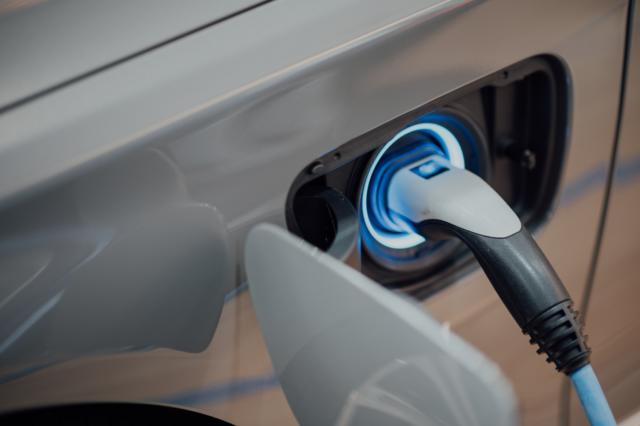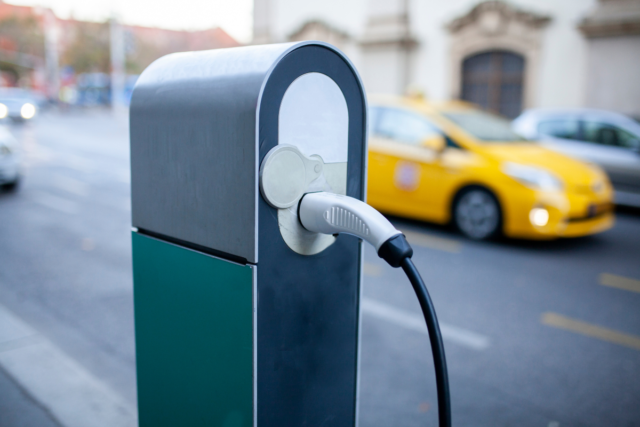
August 18, 2022
Breaking it Down: What does the IRA Mean for Fleet Electrification?
By Matt Donath, Senior Policy Analyst

Part 2: Breaking it Down – A Deep Dive into the Inflation Reduction Act
Stay in the know with Edison Energy’s Pulse on Policy series, a biweekly publication covering the latest in global legislation and regulation that impact corporate procurement plans and sustainability goals.
After months of speculation and rumors that the electric vehicle (EV) industry might get left out of the Schumer-Manchin reconciliation negotiations, it was a surprise to see EV tax credits included in the final bill. After a drawn-out negotiation in the Senate where, again, it was speculated that EV credits could get cut by the Senate Parliamentarian, the Inflation Reduction Act (IRA) passed through both chambers and was signed into law by President Biden on August 16 with the EV provisions intact.
 Now that the dust has settled, what does the IRA mean for the EV industry and fleet electrification?
Now that the dust has settled, what does the IRA mean for the EV industry and fleet electrification?
Along with tax credits for the EVs themselves, the IRA includes increased credit amounts for electric vehicle supply equipment (EVSE), along with billions in funding to boost domestic manufacturing and other requirements that will strengthen the U.S. supply chain.
 Refueling Infrastructure Tax Credit – Section 30C
Refueling Infrastructure Tax Credit – Section 30C
To help drive installation of electric vehicle charging equipment, the IRA extends the expired Section 30C tax credit for alternative fuel vehicle refueling infrastructure for 10 years through 2032, and retroactively to the beginning of 2022.
For commercial entities, the previous credit amount was capped at $30,000 per location where a charger was installed. Under the IRA’s revised guidelines, the amount is raised to a maximum of the lesser of $100,000 or 30% of the cost per charger. Like other tax provisions in the IRA, there is incentive to pay prevailing wages to installers. To receive the full 30% credit amount, projects must be completed with labor paid prevailing wages, otherwise the base credit of only 6% is applied to those projects.
“Many of our clients want to plan for future growth of fleet electrification, which means thoughtful planning of charging infrastructure,” said Simon Horton, EV Infrastructure Lead at Edison Energy.
“The extension and expansion of the tax credit for alternative fuel infrastructure may spur commercial fleets and businesses to invest in holistic EV infrastructure, thus getting ahead of the curve for charger availability rather than piecemeal planning for an electrified vehicle transition.”
The new credit guidelines include requirements to ensure charging stations are installed in communities most often impacted by pollutants from transportation, as well as rural areas that generally lack charging infrastructure. To be eligible for the section 30C credit highlighted above, the charging station locations must be within either a census tract deemed a low-income community or one that is in a non-urban area as defined by the U.S. Census Bureau.

“Investment in electric vehicle charging infrastructure in traditionally underserved areas, especially low-income communities adjacent to shipping ports and trucking corridors, will have a profoundly positive impact on the air pollution and overall quality of life for those populations by reducing the number of traditional ICE trucks traveling those high-volume corridors,” Horton said. “Through our work supporting our clients’ transitions to electric vehicles, we continually highlight the positive outcomes of focusing on disadvantaged communities. Training and hiring local workforce talent as these projects are designed and built allows the communities to participate throughout the process.”
 Commercial Electric Vehicle Tax Credit – Section 45W
Commercial Electric Vehicle Tax Credit – Section 45W
The IRA includes a new tax credit designated for EV purchases by commercial entities that will also run through 2032.
The Section 45W Credit for Qualified Commercial Clean Vehicles provides a tax credit of up to 30% of the incremental cost between the EV and a comparable internal combustion vehicle. Hybrid vehicles that have an internal combustion engine and at least a 15-kWh battery would qualify for a 15% credit. The maximum credit amounts are based on the weight, with vehicles less than 14,000 lbs. capped at $7,500 and those over 14,000 lbs. capped at $40,000.
According to Horton, “the inclusion of a new tax credit for commercial vehicles is a huge boost to support companies that are committing to transitioning their fleets. As the medium and heavy-duty vehicle market expands, the tax credit – along with other state and regional incentives – can greatly reduce the cost difference between electric and traditional gas and diesel vehicles. Closing the price-parity gap will allow fleets to make larger commitments to clean vehicle acquisitions and charging infrastructure.”
 Commercial Vehicles Not Subject to Domestic Manufacturing Requirements
Commercial Vehicles Not Subject to Domestic Manufacturing Requirements
The Clean Vehicle Tax Credits for residential consumers experienced substantial changes under the IRA. The new 30C credit guidelines for residential vehicles include some boosts for the market, like removing the manufacturer sales cap and extending the credits until 2032, but also incorporates some requirements that could cool the market in the short term.
For a vehicle to qualify for the full 30C credit, the battery must contain a given percentage of critical minerals sourced from the U.S. or its allies, include a percentage of components manufactured in North America, and the final vehicle assembly must occur at a North American Facility. None of the battery minerals or components can be extracted or processed by “a foreign entity of concern,” which would exclude China.
While these requirements are meant to ensure credits are going toward American-made vehicles with components sourced from the U.S. and its allies, it is expected to limit eligible vehicles by 70% or more until a shift in manufacturing occurs in the U.S.
After the initial release of the IRA, there were varying opinions on whether these restrictions applied to the commercial vehicle tax credits. After thorough review of the legislation, it is Edison Energy’s opinion that the domestic requirements highlighted above do not apply to the Section 45W commercial clean vehicle credit. This viewpoint has been corroborated by other industry leaders. For the commercial sector looking to electrify their fleets, this exclusion from domestic requirements will result in more vehicle options and potentially less demand for certain vehicles that are not eligible under the residential tax credits.

 IRA Impact on Domestic Manufacturing
IRA Impact on Domestic Manufacturing
Not only does the IRA incentivize the purchase of EVs and the accompanying charging equipment, it also includes tax credits for the manufactures that produce them. This includes $10 billion to fund the Section 48C investment tax credit, providing up to 30% of the cost if labor requirements are met to build new or to upgrade existing manufacturing facilities that produce components of EVs and EVSE.
The newly developed Section 45X Advanced Manufacturing Production Credit program provides a tax credit for each eligible component produced by a manufacturer, including critical minerals and battery components that are needed for EVs.
These incentives for manufacturers, along with residential EV credits being tied to domestic content requirements, should help push auto manufacturers to shift production to the U.S. The emphasis on critical mineral sourcing to either the U.S. or countries with a free trade agreement will also strengthen the supply chain and help ensure fewer disruptions from political issues and tariffs. Major players in the auto industry had already begun looking to the U.S. for new vehicle and battery production facilities prior to the IRA, and this is only expected to grow over the coming years.
While these provisions will limit choices for residential EV buyers in the short term – and it will certainly take time to site and build these facilities – they have the potential to drive down costs and reduce dependence on China over the long term. The emphasis on domestic EV and battery production will also contribute to the more than 9 million new jobs the IRA is expected to create over the next decade.
 Infrastructure Investment and Jobs Act (IIJA)
Infrastructure Investment and Jobs Act (IIJA)
The passage of these EV-related tax credits and push for domestic manufacturing comes at an opportune time, as states and the U.S. Joint Office of Energy and Transportation are focused on building out the national electric vehicle charging network.
In August, all states filed their draft National Electric Vehicle Infrastructure (NEVI) plans to explain how they intend to use funds from the IIJA to install publicly accessible EV infrastructure. The NEVI program requires states to build out infrastructure along Alternative Fuel Corridors – generally interstate highways and major state highways – with direct current fast chargers (DCFC) installed every 50 miles. These publicly accessible DCFCs will help EV drivers travel across states without range anxiety and increase the ability of medium and heavy-duty fleets to operate over longer distances.

With two pieces of landmark legislation passed in the last 10 months, federal support for transportation electrification has never been stronger. The renewed federal focus provides tools for state and local governments to invest in EVs and EVSE in ways they haven’t before, bringing further momentum to an already rapidly changing market. Automakers have already made it clear that EVs are the future of the industry. Now, tailwinds from the IRA and IIJA present fleet owners with their best opportunity to get ahead of the curve and start electrifying.
“The Transportation Electrification team at Edison Energy is excited to take advantage of the clean energy provisions in the Inflation Reduction Act, particularly those supporting greater electric vehicle access and charging infrastructure expansion,” Horton said. “The commitment to ensure investments in underserved communities, the inclusion of support for the medium and heavy-duty transportation sectors, and the focus on both vehicle and infrastructure funding will greatly advance the vital transition away from fossil fuels. Our team is eager to advise our clients as they make that transition.”
Stay tuned for the next installments of our Pulse on Policy series, where we will dive deeper into the climate provisions in the IRA and share our insights on how these policy changes may impact companies’ energy and sustainability strategies.
Join Our Mailing List
Let us meet you where you are in your Transportation Electrification journey.
Get connected with our team.
Learn More



